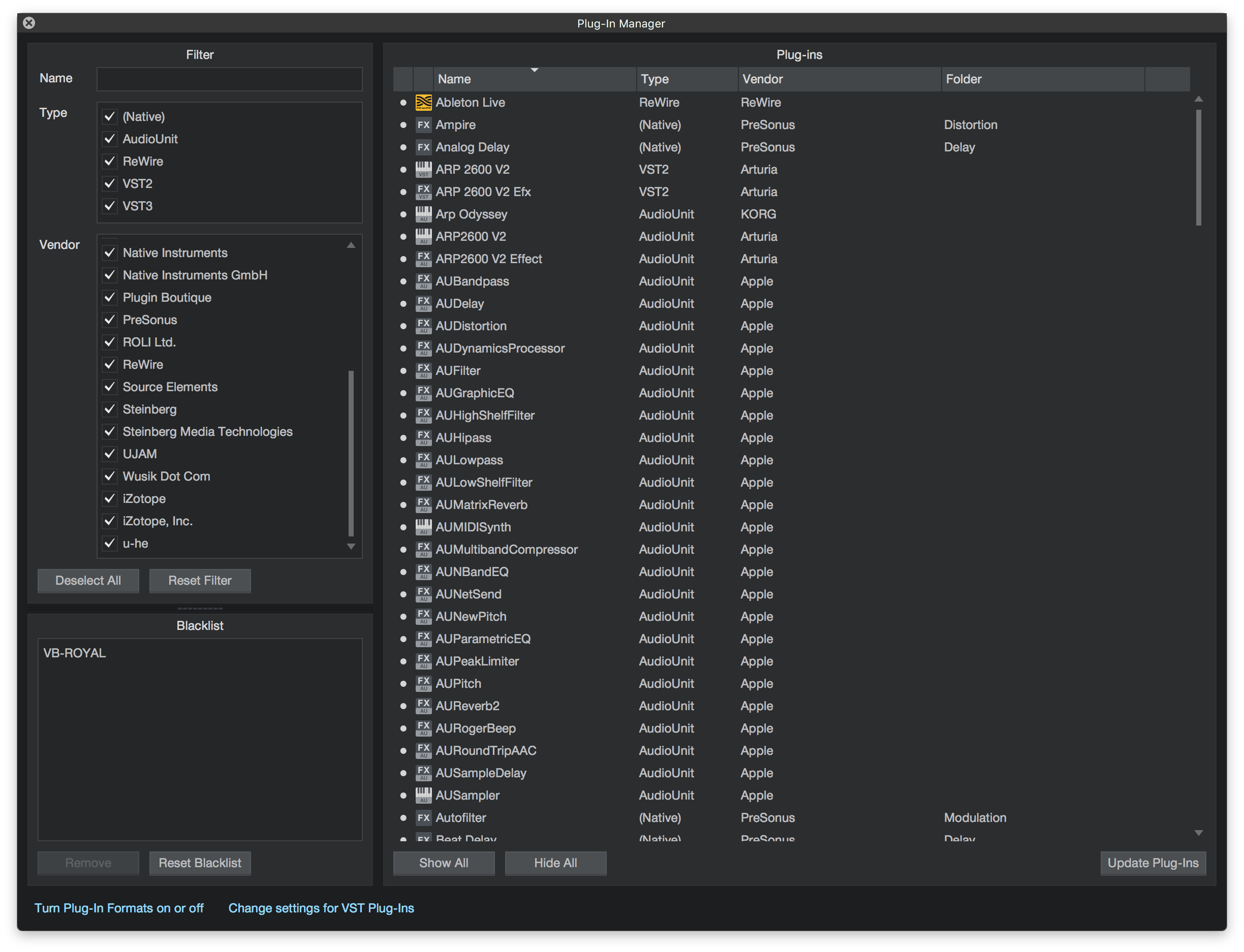Where Are Vst Plugins Stored On Mac
- Where Are Vst Plugins Stored On Mac Download
- Where Are Vst Plugins Stored On Mac Os
- Free Mac Vst
- Where Are Vst Plugins Stored On Mac Free
Trombon Latino VSTi is a beautiful sounding customer requested VST plugin that includes different Latin styles of playing as well as multiple articulations and velocity layers. All these Trombones were recorded, sampled and edited in our state of the art facilities in Las Vegas, Nevada United States of America. I figured it out. I didn’t realize that the LABS instruments were all controlled by one plug-in called ‘LABS’ (instead of a different plug-in for each instrument; each download appeared to install a new plug-in but actually was just overwriting the one and only) and that the AU-formatted version would be installed (the installer made it look like it would install the VST2. The other plug-ins are located in the bottom within the Smart Controls area, including within the plug-ins option as well as within the Amp Designer, Bass Amp Designer, and the Pedalboard. Whenever you download plug-ins through the way I showed earlier in the article, the plug-ins will often appear in the Audio Units tab. Few Words About OwlPlug. OwlPlug is a desktop application for Windows and Mac that simplifies VST Plugin management and installation. User installed plugins are automatically discovered and new plugins can be installed through Stores.The default store called OwlPlug Central delivers quality plugins made. Click here to switch to VST plug-in locations on Mac OS X and macOS. Click here to switch to Locations of internal Cubase and Nuendo plug-ins. First of all, it is important to understand that not all VST plug-ins are being installed into the same folder. The installation path of a plug-in depends on several factors: VST format: VST2 or VST3?
Welcome! In this tutorial series we will be learning how to create audio plugins that run as VST, VST3, AU, RTAS, AAX or as a standalone application.
Audio plugins are programs that are loaded into a host software (such as Ableton Live, Logic or REAPER). They process Audio and/or MIDI data and can have a graphical user interface. Here are three examples (U-He Zebra, Sonalksis FreeG and D16 Decimort):
As you can see, the GUI usually contains some controls (the knob being the most common) that change how the plugin processes incoming data. A plugin has presets (in the screenshot they’re called Combo and Emulator) that store all knob positions and other values.
We’ll start with a simple distortion plugin. After that, we’ll create this subtractive synthesizer plugin step by step:
We will use C++ and the WDL-OL/how-to-install-vst-plugins-fl-studio-11.html. library. It is based on Cockos WDL (pronounced whittle). It basically does a lot of work for us, most importantly:
- Ready-made Xcode / Visual Studio Projects
- Create VST, AudioUnit, VST3 and RTAS formats from one codebase: Just choose the plugin format and click run!
- Create 32/64-Bit executables
- Make your plugin run as a standalone Win/Mac application
- Most GUI controls used in audio plugins
It also gives you most GUI controls used in audio plugins, and some commonly used audio algorithms like for example resampling. This forum thread has screenshots of a lot of plugins that were done using WDL.
The different plugin formats all do more or less the same, so normally there would be a lot of copy & paste in your code. As a programmer you want to stay DRY, so sooner or later you’d write an abstraction layer over the different formats. This work has already been done in the form of IPlug, which is a part of WDL. These are the annoying parts of audio plugin development, so we can now focus on the fun stuff, such as:
- How the plugin processes incoming Audio/MIDI
- What the plugin looks like
- How it integrates with the host (automation, presets, etc.)
Another good thing about WDL is its permissive license: You can use it freely for commercial applications. See the links above for details.

Where Are Vst Plugins Stored On Mac Download
How we will do this
The chase is better than the catch.
Where Are Vst Plugins Stored On Mac Os
You can install Audio Units plug-ins from manufacturers other than Apple to process audio in Logic Pro, GarageBand, and Final Cut Pro. When installed, Audio Units plug-ins appear as individual components in the Library folders on your Mac:
Free Mac Vst
- In the Finder choose Go > Go to Folder, enter '/Library/Audio/Plug-Ins/Components' into the Go to Folder field, then click Go.
- You can also check the Library in your Home folder. In the Finder choose Go > Go to Folder, enter '~/Library/Audio/Plug-Ins/Components' into the Go to Folder field, then click Go.
Where Are Vst Plugins Stored On Mac Free
Built-in effects and instruments included with Apple apps like Logic Pro, GarageBand, MainStage, and Final Cut Pro don't appear in the Library folders and can't be removed manually.